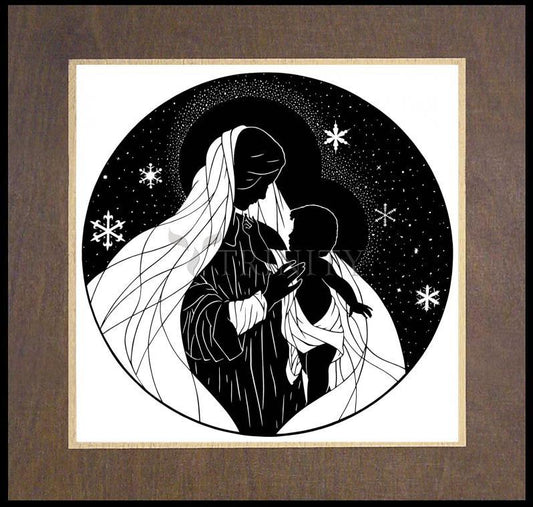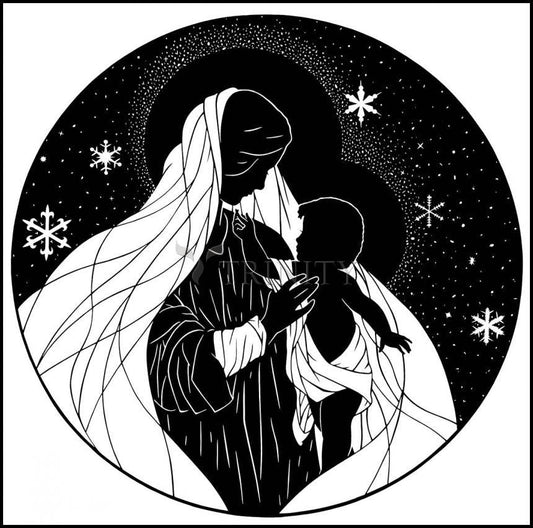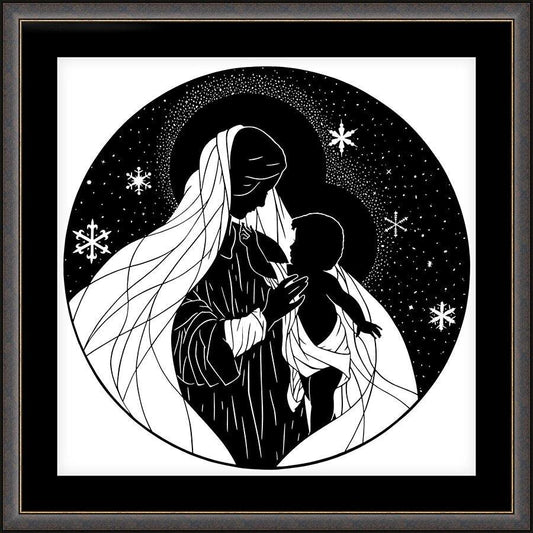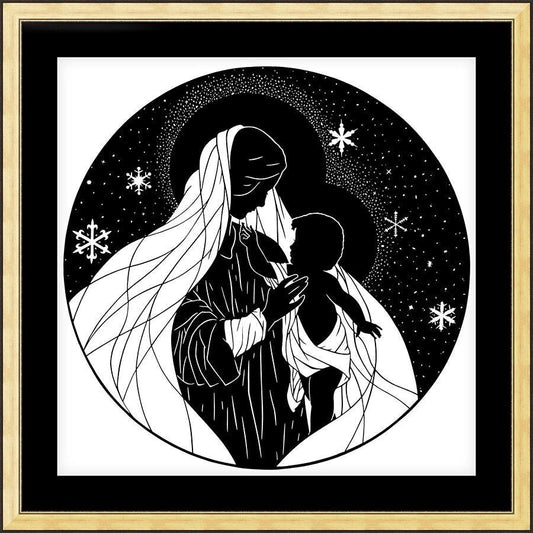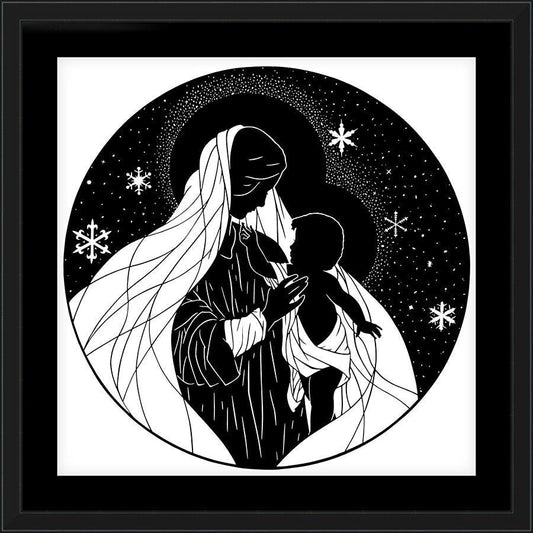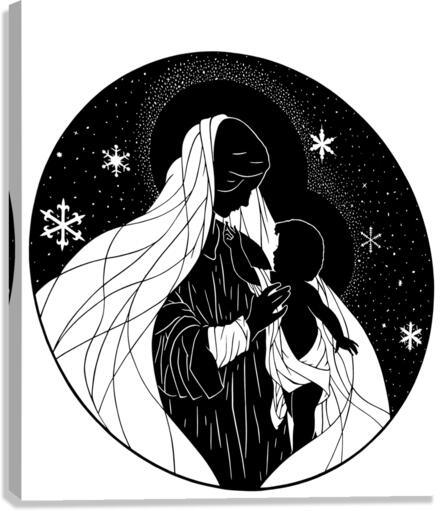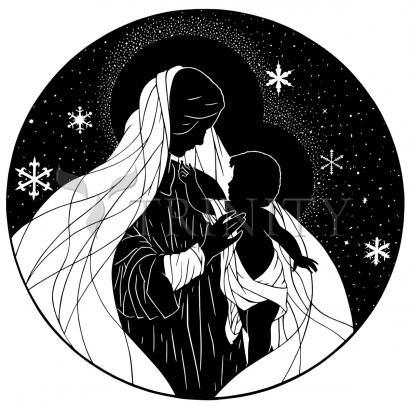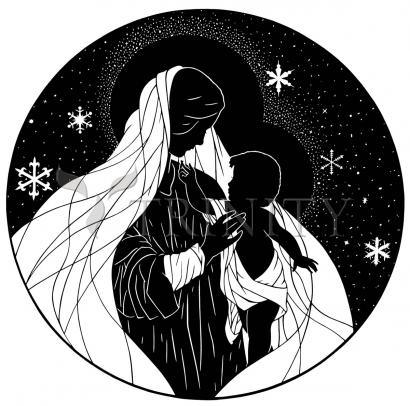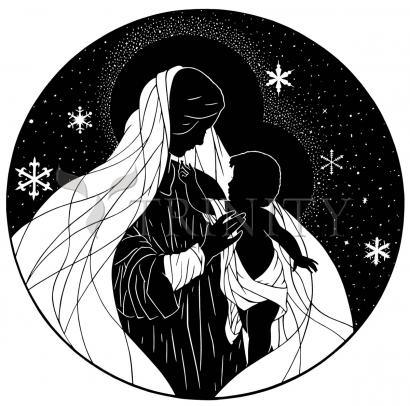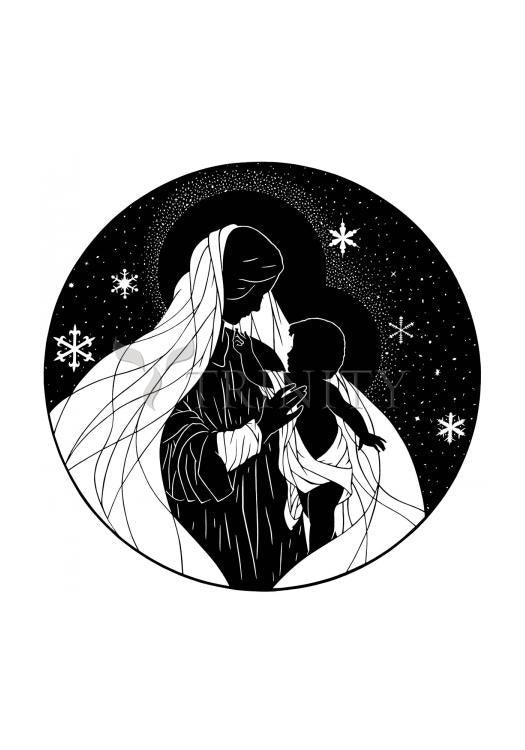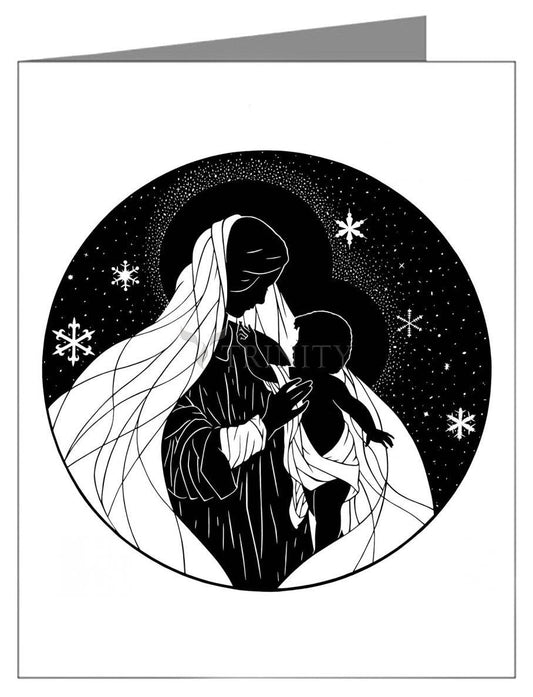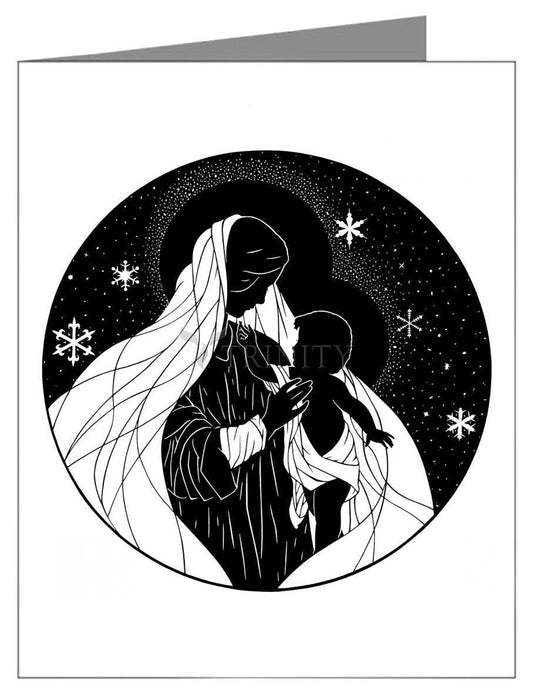ARTIST: Dan Paulos
ARTWORK NARRATIVE:
Prayer to Our Lady of the Snows
Mary, Mother of God, it is our Christian belief that all who fashion their lives in imitation of your Son, Jesus Christ, and have placed their hope in Him are gathered together in a communion of saints. Those who have gone before us live in intimate communion with Christ. You are the most eminent of them, for you were drawn into His life and being as no other. You who gave Him human life followed Jesus, the Way, the Truth and the Life.
Teach us, Mary, to embrace Christ fully, to make Him our Way, our Truth, our Life. Teach us, Mary, to carry Christ to the world, and, each in our own way, to give Him birth in the hearts of many. Protect your people, Mary; protect your Church. Through Jesus Christ Our Lord, Amen.
Her feast day is August 5.
Read More
A feast that commemorates the dedication of the church of Santa Maria Maggiore on the Esquiline Hill in Rome. The church was originally built by Pope Liberius, and was called after him Basilica Liberii or Liberiana. It was restored by Pope Sixtus III, and dedicated to Our Lady. From that time on it was known as Basilica S. Marià or Marià Majoris. Since the seventh century it was known also as Maria ad PrÃsepe.
The appellation ad Nives (of the snow) originated a few hundred years later, as did also the legend which gave this name to the church. The legend says that during the pontificate of Liberius, the Roman patrician John and his wife, who were without heirs, made a vow to donate their possessions to Our Lady. They prayed that she might make known to them how they were to dispose of their property in her honor.
On 5 August, during the night, snow fell on the summit of the Esquiline Hill. In obedience to a vision which they had the same night, the couple built a basilica in honor of Our Lady on the spot which was covered with snow. From the fact that no mention whatever is made of this alleged miracle until a few hundred years later, not even by Sixtus III in his eight-lined dedicatory inscription, it would seem that the legend has no historical basis.
Originally the feast was celebrated only at Sta Maria Maggiore. In the fourteenth century it was extended to all the churches of Rome, and finally it was made a universal feast by Pope Pius V. Pope Clement VIII raised it from a feast of double rite to double major. The mass is the common one for feasts of the Blessed Virgin; the office is also the common one of the Blessed Virgin, with the exception of the second Nocturn, which is an account of the alleged miracle. The congregation, which Pope Benedict XIV instituted for the reform of the Breviary in 1741, proposed that the reading of the legend be struck from the Office, and that the feast should again receive its original name, Dedicatio Sanctà MariÃ.



